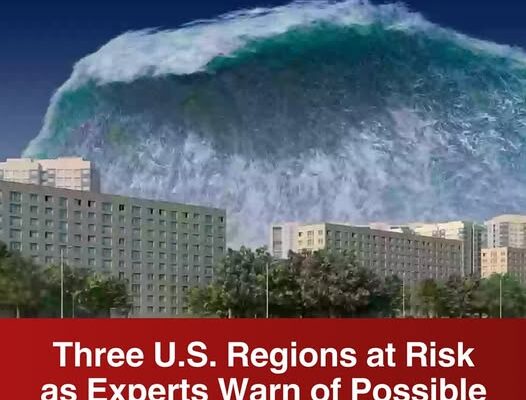Imagine waking up to find the ocean rushing toward your home — a scene that feels like a movie but is a real and alarming possibility in parts of the United States. Scientists are warning that a catastrophic “mega tsunami” could strike regions along the West Coast, especially from Northern California through Washington State, with Alaska and Hawaii also at serious risk.
The major threat comes from a massive earthquake along the Cascadia subduction zone, a fault line stretching from Northern Vancouver Island down to Cape Mendocino, California.
This fault has the power to generate a devastating earthquake that could trigger land collapse and a massive tsunami capable of erasing entire coastal communities. According to a new study by researchers at Virginia Tech, a quake in this area could cause coastal land to sink by as much as six and a half feet, significantly increasing the risk of flooding and expanding coastal floodplains.
Lead researcher Tina Dura explained that this type of land subsidence following an earthquake has not been fully accounted for before and could drastically delay recovery efforts. Alarmingly, experts estimate there is a 15% chance of a magnitude 8.0 or greater earthquake striking this zone within the next 50 years. What makes this even more dangerous is the potential for tsunami waves that can reach hundreds of feet high and travel at incredible speeds, destroying everything in their path.
While the Pacific Northwest isn’t densely populated, most of its coastal communities are located in low-lying estuaries, putting them right in the danger zone for both land sinking and massive wave impact. Alaska faces similar dangers due to melting glaciers, which increase the risk of landslides and tsunamis. Meanwhile, Hawaii has a long history of massive waves caused by volcanic collapses, including a 1,000-foot mega tsunami that hit Lanai around 105,000 years ago. Volcanoes like Mauna Loa and Kilauea remain highly active, with Kilauea erupting as recently as May 16, highlighting the ongoing geological instability. These events are part of a larger seismic region known as the Ring of Fire, where tectonic activity regularly produces powerful earthquakes and volcanic eruptions. The last major quake from the Cascadia subduction zone occurred in 1700, meaning the region is long overdue. While no one can prevent such a disaster, preparation is key — know your evacuation routes, stay informed through emergency alerts, and make a plan with your family. The next big quake isn’t a question of “if,” but “when,” and those living near the West Coast are urged to take the warning seriously.
